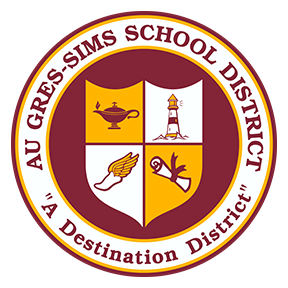Au Gres-Sims Students Conduct Research on Threatened Pitcher’s Thistle
https://huronpines.org/2018/06...
Posted on June 21, 2018
Earlier this month, Au Gres-Sims students took their semi-annual trip to Big Charity Island, part of Michigan Islands National Wildlife Refuge (MINWR). The students were accompanied by staff from Huron Pines, U.S. Fish and Wildlife Service, Great Lakes Stewardship Initiative Network, Michigan Sea Grant and Saginaw Bay Cooperative Invasive Species Management Area. The trip allows students to engage in hands-on field research—monitoring and collecting data on invasive and threatened plant species on the island.
Big Charity Island is home to Pitcher’s thistle, a plant that has been designated federally as a threatened species, meaning that there is a likelihood that the species could become endangered. In the case of the Pitcher’s thistle this is mostly due to disturbances to its natural dune habitat caused by invasive plant species, development, road construction and recreation along shorelines. Because the portion of Big Charity Island where the students collect data is part of the MINWR, it remains relatively untouched since visits require permission from the U.S. Fish and Wildlife Service. Thanks to that protection, the island offers students a unique opportunity for field research that might not be possible in other locations.
One threat to Pitcher’s thistle that does remain, even with controlled access to the island, is the invasive wetland grass phragmites. Phragmites spreads rapidly and aggressively, with dense far-reaching root systems that can take nutrients away from native plants like Pitcher’s thistle. Big Charity Island is surrounded by phragmites, but thanks to funding and technical support provided by the U.S. Fish and Wildlife Service’s Coastal Program, Huron Pines has been treating the phragmites on the island for the past four years to reduce its impact on sensitive native plants in the area.
On their field trips, students are helping to research the impact of phragmites treatment on Pitcher’s thistle. In addition to taking inventory of the plants from year to year, the students also calculate the density of phragmites each year. These measurements help determine how well the treatments are working and if adjustments need to be made. The data can also be used to see if a reduction in phragmites helps more Pitcher’s thistle to grow over time.
This entire experience from trip logistics, to data collection, to analysis is made possible because of strong community support and the active involvement of many diverse project partners including Huron Pines, U.S. Fish and Wildlife Service, Au Gres-Sims School District, Brown’s Landing, Charity Island Transport, Inc., Great Lakes Stewardship Initiative Network, Michigan Department of Natural Resources, Michigan Natural Features Inventory, Michigan Sea Grant, Michigan State University Extension, Saginaw Bay Cooperative Invasive Species Management Area (CISMA) and Saginaw Valley State University.

